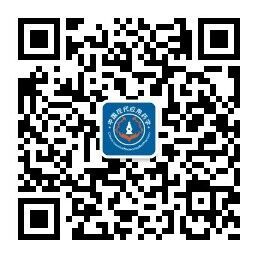| 引用本文: | 蔡中齐,罗益远,王芙蓉,李娜,蔡红蝶,陈妮妮,陈宏降,王娟.基于UFLC-MS/MS结合网络药理及实验验证的乌药叶抗高脂血症作用及机制研究[J].中国现代应用药学,2024,41(24):. |
| caizhongqi,LUO Yiyuan,Furong Wang,LI Na,CAI Hongdie,CHEN Nini,CHEN Hongjiang,WANG Juan.Explore the Potential Mechanism and Anti-hyperlipidemia Effect of Linderae Folium via UFLC-MS/MS Network Pharmacology and Experimental Verification[J].Chin J Mod Appl Pharm(中国现代应用药学),2024,41(24):. |
|
| |
|
|
| 本文已被:浏览 441次 下载 488次 |
|
|
|
| 基于UFLC-MS/MS结合网络药理及实验验证的乌药叶抗高脂血症作用及机制研究 |
|
蔡中齐, 罗益远, 王芙蓉, 李娜, 蔡红蝶, 陈妮妮, 陈宏降, 王娟
|
|
浙江药科职业大学
|
|
| 摘要: |
| 目的:采用UFLC-MS/MS技术分析乌药叶中化学成分,依据解析的化学成分结合网络药理、分子对接技术和动物实验验证分析乌药叶防治高脂血症的主要活性成分、作用靶点及相关通路,初步探索其防治高脂血症的潜在作用机制。方法:通过UFLC-MS/MS技术分析乌药叶中化学成分,采用网络药理学对高脂血症相关靶点进行预测,构建“化合物-疾病-靶点”网络。通过GO功能和KEGG分析,筛选出显著富集的通路(P <0. 05)。对筛选出的活性成分与高脂血症关键靶点进行分子对接验证,最后采用RT-PCR对关键靶点进行动物实验验证。结果:共分析鉴定32个化合物,其中包括8个生物碱类、16个黄酮类、8个内酯类化合物。网络药理学研究共筛选出活性成分8个,涉及相关基因靶点46个。基于GO和KEGG分析乌药叶降脂作用的潜在机制,主要涉及以下几条通路:流体剪应力与动脉粥样硬化信号通路; AGE-RAGE信号通路; TNF信号通路;脂肪细胞因子信号通路。动物实验表明乌药叶醇提物可明显上调清道夫受体B类Ⅰ型(scavenger receptor class B type Ⅰ,SR-BⅠ)的表达,并下调酰基辅酶A-胆固醇酰基转移酶(Acyl-coenzyme A: cholesterol acyltransferase, ACAT)基因的表达。结论:乌药叶对高脂血症潜在改善作用,其通过多成分、多靶点、多通路发挥效应,作用机制可能参与炎症反应、脂肪代谢、胰岛素抵抗和血管内皮功能等过程相关。 |
| 关键词: 乌药叶 UFLC-MS/MS 高脂血症 网络药理学 分子机制 |
| DOI: |
| 分类号: |
| 基金项目:浙江省医药卫生科技计划项目(2023KY298),浙江省基础公益项目(LTGN23H280002),浙江省大学生科技创新活动计划(新苗人才计划)项目(2022R460A001)。浙江省药品监督管理局科技计划项目(2022009);浙江省教育厅一般项目(Y202250217);宁波市自然科学基金(2023J306);浙江药科职业大学校级课题 |
|
| Explore the Potential Mechanism and Anti-hyperlipidemia Effect of Linderae Folium via UFLC-MS/MS Network Pharmacology and Experimental Verification |
|
caizhongqi, LUO Yiyuan, Furong Wang, LI Na, CAI Hongdie, CHEN Nini, CHEN Hongjiang, WANG Juan
|
|
Zhejiang Pharmaceutical University
|
| Abstract: |
| Objective To Analyze the chemical composition of Linderae Folium by UFLC-MS/MS,then predicting the pharmacodynamic substance basis of treating Anti-hyperlipidemia based on its chemical composition and network pharmacology, checking out the potential efficacy ingredients and mechanism of action. Methods UFLC-MS/MS was used to analyze the chemical composition of Linderae Folium and analyze the major active compounds, targets and related target pathways of Linderae Folium for prevention and treatment of hyperlipidemia via network pharmacology and molecular docking, and explore the potential mechanism of Linderae Folium on hyperlipidemia. Potential lipid-lowering active ingredients and related targets of Linderae Folium were screened and predicted by literature and TCMSP database. Meanwhile, the targets of hyperlipidemia were predicted by 5 databases, such as OMIM, TTD, and a "compound -disease-target" network was constructed. GO and KEGG analysis were used to screen out significantly enriched pathways ( P< 0. 05) . The active compounds and hub genes for the treatment of hyperlipidemia were verified by molecular docking.Finally, RT-PCR was used to verify the key targets using animal experiments. Results There were 32 chemical components analyzed by qualitative analysis of Linderae Folium, including 8 alkaloids, 16 flavonoids and 8 lactones. A total of 8 active ingredients and 46 related gene targets were screened by network pharmacological study. To explore the potential mechanism of Lindera Folium on lipid-lowering effect based on GO and KEGG analysis, the results suggested that the mechanism was mainly involved in the following pathways: Fluid shear stress and atherosclerosis; AGE-RAGE signaling pathway; TNF signaling pathway; Adipocytokine signaling pathway. The results of RT-PCR showed that Lindera Folium could significantly upregulate the expression of scavenger receptor class B type Ⅰ (SR-BI) mRNA,and downregulate the level of Acyl–coenzyme A: cholesterol acyltransferase (ACAT) mRNA. Conclusion In summary, Lindera Folium might have effective on alleviate hyperlipidemia, and it exerted multi-component, multi-target and multi-pathway synergistic effect. The mechanism may be related to inflammatory response, fat metabolism, insulin resistance and vascular endothelial function. |
| Key words: Linderae Folium UFLC-MS/MS hyperlipidemia network pharmacology molecular mechanism |
|
|
|
|
